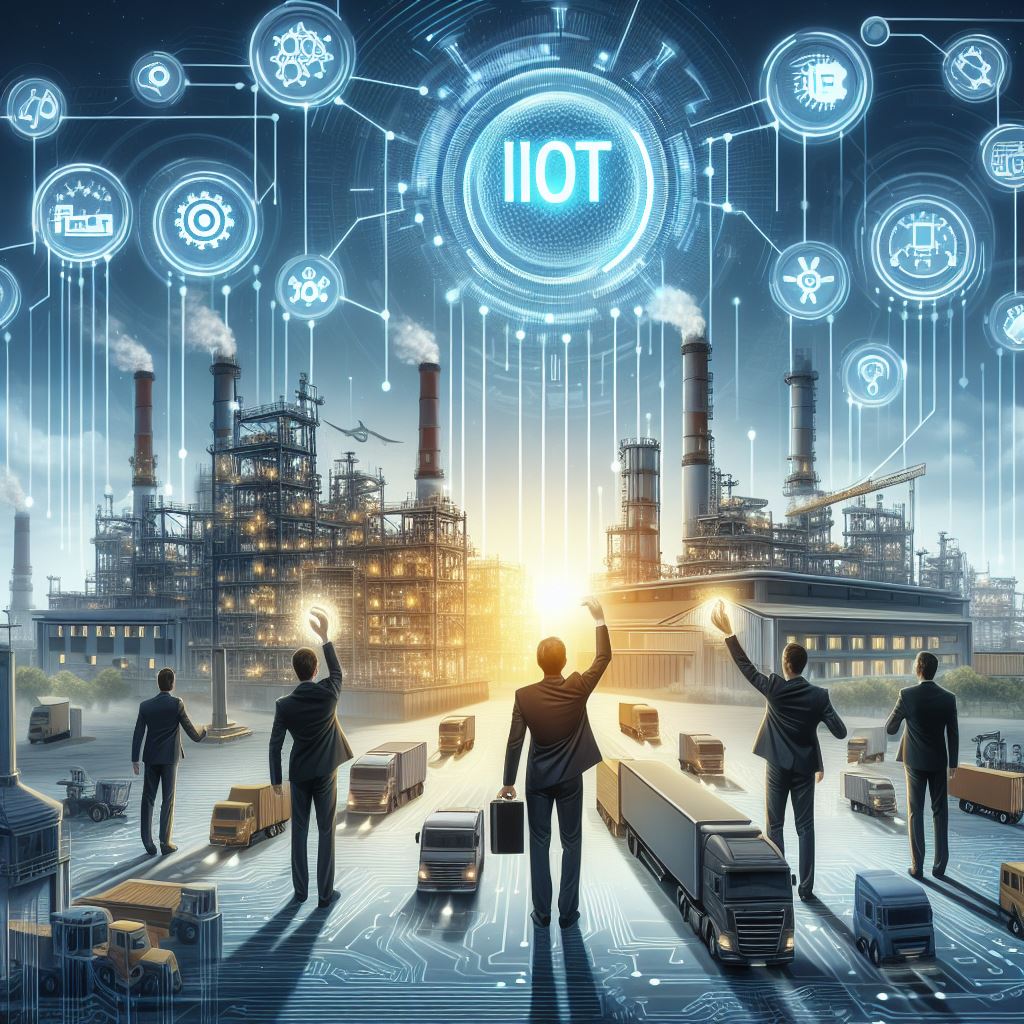Over the years, innovations have brought about some significant milestones for industries. Manufacturing is undergoing a paradigm shift. In recent years, a new industrial paradigm called Industry 4.0 has emerged among emerging technologies, which has bridged the gap between humans and machines.
Technology was rapidly gaining ground around the world, as it held the promise of maximizing productivity, contributing to the advancement of science, enriching nations’ economies, and improving people’s quality of life.
The term Industry 4.0, refers to the passage to a fourth stage of human development since the First Industrial Revolution. Despite its recent emergence, Industry 4.0 solutions (fourth stage) are expected to gain more traction in the late 20s and early 30s of the 21st century. Global IIoT value estimates have risen rapidly, with some anticipating it to reach $1693.30 billion by 2030. With the industrial internet, businesses can optimize industrial processes, cut costs, and leverage analytics to produce endless value.
Defining the Industrial Internet of Things (IIoT)
Using the Internet of Things (IoT) in industrial environments is known as the Industrial Internet of Things (IIoT). Typically, it includes the collection of data from smart connected devices, sensors, actuators, and systems. After collecting the data, it is cleansed, configured, and analyzed in the cloud. The data is then delivered in real-time to managers, operators, and other end users. Using these insights, advanced applications and robotics can develop predictive and descriptive solutions and even trigger machines to act autonomously.
Benefits of IIoT :
1) Efficient Inventory Management: Asset and inventory management can be optimized with IIoT. In this way, downtime can be reduced as personnel will be notified ahead of time that inventory is decreasing.
2) Transparent Production Process: Having machines and production lines equipped with sensors will allow for more agile and efficient production, as outages will be detected instantly through real-time monitoring of IoT devices.
3) Quality Control: After a product is created, a quality control assessment can be conducted instantly by monitoring the equipment for creating the product (speed, vibration, etc.).
4) Shorter Time-to-market: A reduced product cycle time results from efficient inventory management and efficient production processes, resulting in faster company-to-market times.
5) Improved Safety: As employers are willing to invest in costly, modern equipment, IIoT may improve the safety of the workplace.
6) Transparency in Record Keeping: IIoT improves record-keeping consistency and constancy. The management can gain accurate insights into the day-to-day activities of the business by having access to real-time, accurate, and insightful shop floor data – foot traffic, customer demographics, sales amounts, etc.
7) New Levels of Automation: By connecting new sensors, devices, and parts of the manufacturing chain, companies can create self-managing and, eventually, self-improving systems.
8) Enhanced Productivity & Efficiency: Increasing data collection, centralizing and mastering sources of truth, and improving information exchange all contribute to improved productivity and efficiency
9) Better Decision-making: With IIoT technologies, manufacturers can access real-time data and analytics, enabling them to make more data-driven and informed decisions.
10) Enhanced Maintenance & Reliability: By predicting equipment failures and preventing them, IIoT technologies can help manufacturers reduce downtime and improve reliability.
11) Enhanced Customer Experience: IIoT technology allows manufacturers to track and monitor products at every stage of the supply chain, improving customer experience and providing real-time updates.
Industrial IoT in Manufacturing: Trends In 2023
The IIoT is becoming increasingly popular in manufacturing, and certain technologies are poised to trend.
- AIoT : Artificial Intelligence of Things (AIoT) combines AI with IoT to close the data utilization gap, enabling manufacturers to shift the focus from IoT data volume to IoT data value.
- Predictive IoT : The ability to predict events is one of the leading outcomes of IoT and AI convergence in manufacturing. Manufacturing sectors have already benefited from predictive IoT solutions, including predictive maintenance.
- Digital Twins: Digital twin technology has revolutionized the way industrial products are designed, manufactured, and maintained, resulting in faster, more accurate, more agile, and more efficient production.
- Industrial Metaverse: To make predictive decisions, industrial companies can use metaverse applications like virtual reality (VR) in combination with digital twins to build simulated worlds that closely model the operating environment.
- Emphasis on Cyber Resiliency: There is a renewed focus among device manufacturers, security experts, and regulators on the cyber resiliency of IIoT systems due to the complexity of threats and the increasing number of IoT cyber-attacks.
- Sensor Technology Advancements: An industry study projects that the market for industrial automation sensors will reach $22.59 billion by 2029 at a CAGR of 9.6 percent.
Various components of the Industrial Internet of Things (IIoT)
The IIoT goes beyond the usual interconnectivity of physical devices and consumer gadgets associated with IoT. The four main parts of IIoT are:
- Smart Machines: Any manufacturing or processing industry relies on machines. IIoT applies IoT’s concept of communication to the machines used in industries.
- Sensors: In both the IoT and IIoT, sensors play a key role. Physical changes in the environment are converted into electrical signals by sensors.
- Infrastructure: IIoT infrastructure refers to all the digital communication that occurs through the network.
- Software, Radios, and Controllers: Industry setup machines have controllers or radios, which run over custom software. IIoT standards should also be supported by these subunits.
Industries that Use IIoT
Many industries are using IIoT devices and technology. Among the industries that use IIoT solutions are:
- Electric Utilities
- Oil and Gas Industry
- Automotive Industry
- CNC Machine Companies
- Aerospace & Defense
- Retail
- Healthcare Industry
Risks and Challenges
Specific issues associated with Industrial IoT, are:
1) Investment Cost: With any new technology, the cost of adoption and implementation is high on the list of considerations.
2) Training and Experience: Many operators and in-house IT staff are hesitant to adopt IIoT because of a lack of experience and training.
3) Security: IIoT security issues can be caused by weak encryption, insecure mobile interfaces, and insecure web interfaces.
To Conclude:
IIoT is one of the most exciting technology trends today, but adoption is still in its infancy. In the future, IIoT will have more connected devices, tighter security, and lower adoption costs.
Looking for Industry 4.0 solutions? Sterison Industrial IoT (IIoT) collects and analyzes sensor-generated data to support equipment monitoring and maintenance, production process analytics, control, and much more. By ensuring a step-by-step transformation of every segment of the supply and production chain, we ensure a smooth transition to Industry 4.0.






